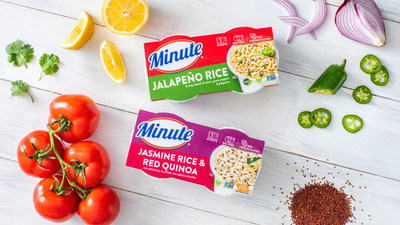CPG brands are leaning on small-sized portions, citing health-conscious shoppers

The pandemic trend of individually-wrapped and single-serve goods is sticking around.
Future Market Insights anticipates that the “portion packs” market will hit $3.6 billion in 2022 and accelerate to $7.3 billion by 2032. The category includes food items packaged in individual servings like pouches, cups or blister packs. Brands point to increasingly health-conscious shoppers as the primary source of demand — but as inflation pushes up the cost of foods, these CPG companies may be able to save costs with these types of smaller packages that contain less product.
PepsiCo noted in its earnings release this month that small format snacks are seeing “huge growth,” especially products with full sugar. Danone, known for its yogurt brands like Activia, Oikos and Dannon, is seeing heightened demand and popularity in different formats beyond cups of yogurt. And rice brand Riviana Foods is launching new flavors of single-serve rice and quinoa blends.
Danone’s Chief Customer Officer Kristina Cole said while single-serve might once have been about taking something to go, it’s now become a popular way for people to eat quickly and healthily while working from home.
“Consumers are still looking for those on-the-go, immediate consumption opportunities, and they’re looking for that at home,” she said.
Whether it’s a single-serve cup or drinkable form of yogurt, Cole said Danone has seen a significant acceleration in the past two years. This applies to yogurt in cup form as well as pouches; Horizon Organic Growing Years are marketed toward kids, and Cole said they’re a popular option for working-from-home parents who want to give their kids a healthy snack.
In addition to the ready-to-serve convenience factor, Cole said she sees a growing importance of healthy choices in food that might be driving consumers to smaller portions. This bodes especially well for products that have immune-boosting ingredients or extra probiotics.
During the pandemic, Danone launched Activia+ Probiotic, a drinkable yogurt that comes in a shot-sized bottle to meet this demand. So far, the forecast looks strong: yogurt shots have a four-year CAGR of 6.3% while probiotic yogurt shots have a four-year CAGR of 25%, per Danone.
Ramon Laguarta, chairman and Chief Executive Officer at PepsiCo, said in a recent earnings that health is becoming a priority for consumers, pointing to low-sugar drinks as well as small portions. It’s one way the brand continues to evolve as consumers move toward healthier and less caloric drink options like sparkling water or energy drinks.
“We’re seeing in snacks a huge growth on small format, multipacks or not only it’s portion control but variety,” he said. “And we’re seeing that also in beverages where full sugar products are going to smaller portions, right, like mini cans or some other formats that give the consumer a little pleasure for — without a lot of calories.”
In early July, U.S.-based rice company Riviana Foods announced two new varieties of its Minute Rice Cup, one with jalapeno flavor and the other with a combo of jasmine rice and red quinoas. Both are vegan and gluten free, and the BPA-free cups pop in the microwave for one minute.
“Consumers can expect the same convenient, flavorful, high-quality rice they rely on so they can spend less time cooking and more time enjoying their meal and the moments in life that matter,” Erica Larson, Senior Brand Manager at Riviana Foods, in a news release.
Barb Stuckey, chief innovation and marketing officer with food consultant Mattson, said she heard about more demand for individual serving size packets during the pandemic when there were concerns about sharing food. Her work focuses on helping food retailers come up with new products.
“In our relationship with clients we were hearing, ‘Our entire snack nut business in the bar scene is practically nonexistent because no one wants to stick their hand in a bowl of snack nuts, because of fears about coronavirus,’” she said.
Stuckey also said that in 2022, manufacturers who are concerned about the costs of goods may be rethinking about how things are packaged to help cut costs. Smaller packages can be less efficient for CPG brands because they can drive up the cost per ounce, and cost more than making a larger package, Stuckey explained. But as costs of packaging materials and shipping fees rise, shrinking products might be something manufactures look at, she said.
Both Danone and PepsiCo in their latest earnings releases referenced the high inflationary environment; Pepsi’s Laguarta said that inflation is continuing to be a concern, but that the business’ main responsibility is to ensure categories grow regardless of inflationary pressures. Danone’s Chief Financial, Technology and Data Officer Juergen Esser said in April that inflation was a key point of focus, with costs of goods like milk and starch going up, but that the first quarter still saw 7.1% net sales growth.
“Everyone is feeling the pinch and the increased cost of goods,” Stuckey said. “Every part of the supply chain is more expensive now. Every company will have their own way of reacting to it.”

